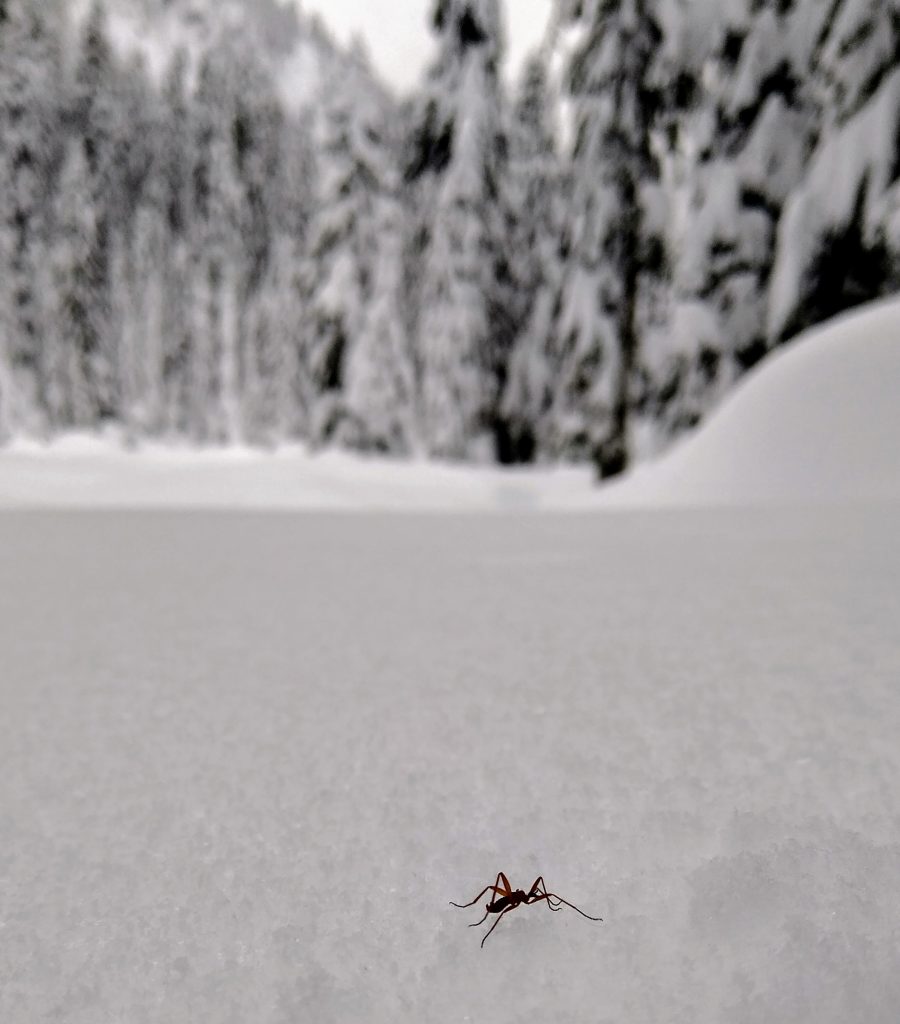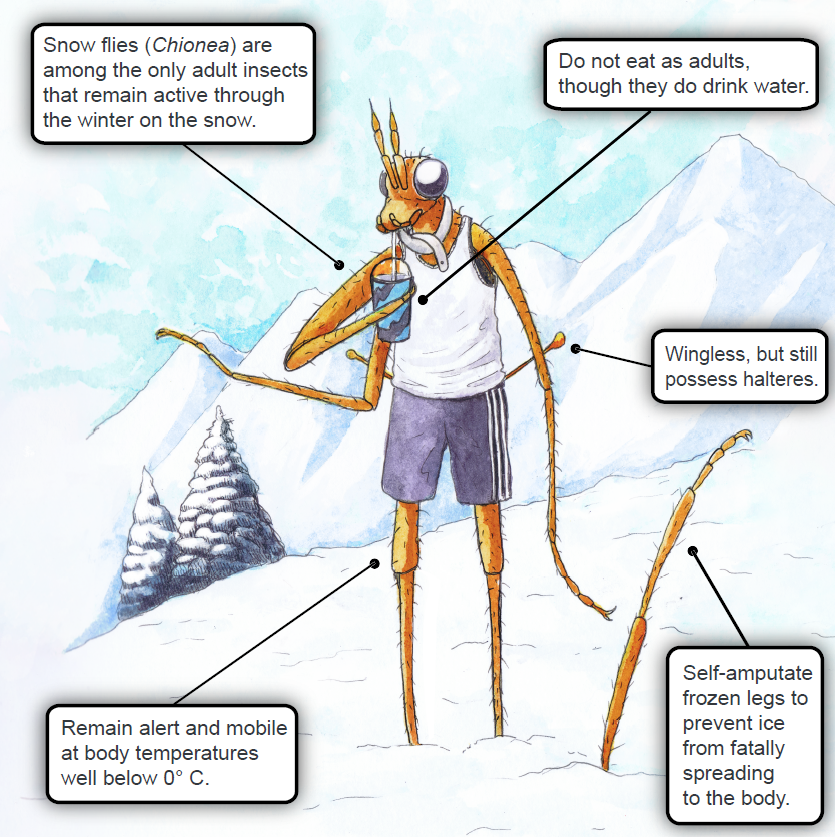The insect genus Chionea, commonly known as the snow fly, is comprised of flightless flies distributed across the northern hemisphere, with collection records from the USA, Canada, Europe, Russia, Japan, and Korea. Frequently found in montane, forested habitats on snow or in cave systems, Chionea are adapted for cold environments. As their common name implies, adult snow flies are frequently observed on snow where it is easy to spot them, but their habitats include “leaf litter, under logs and stones, in subnivean habitats or in mammal burrows” with snow fly larvae residing in the soil (Novak et al., 2007).

In the state of Washington we have found Chionea in the mountains from Mt. Baker to Goat Rocks to the Olympics. Like skiers, they seem to prefer bluebird days and fresh powder. We find them most commonly on open, sunny slopes, within 200 meters of the treeline. However, we have also spotted snow flies at lower elevations in the forest and up to 3,000 meters on volcanoes. In our experience, snow flies are most active in the late afternoon. In North America, snow flies have been found from September through May, with their populations peaking in October-November and February-March (Shrock, 1992).
Snow flies are distinctive in their appearance, with long, spindly legs. They lack wings but do possess halteres. It has been suggested that their lack of wings might have evolved due to exposure to cold temperatures and wind (Hackman, 1964; Byers, 1983; Novak et al., 2007).

Interestingly, female snow flies store some of their hundreds of eggs in their thoracic cavity, which is where their flight muscles would have been, had they possessed wings!

Adult snow flies are not believed to eat, instead only drinking water from snow melt. (However, we have observed that snow flies will eagerly sip from a drop of maple syrup). Snow fly larvae may be coprophagous, feeding on the feces of rodents living in burrows, although this has not been observed directly.
Recent phylogenetic work placed the genus Chionea within the subfamily Chioneinae and the family Tipulidae, which broadly comprises all crane flies (Peterson et al., 2010). There are 18 described Nearctic (Canadian, USA) species and 14 Palearctic species (Europe, Asia) of Chionea (Vanin & Masutti, 2008).

